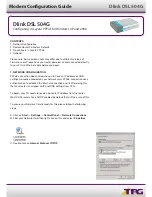
Quantum and Evolution Series Installation and Operating Handbook
7-94
set to a lower value.
Edit-Rx-Demodulation-Advanced Menu
This menu can be selected (when user level is set to
Advanced
) following the setting of the
modulation type. It contains the following options:
•
Symbol mapping.
This determines how data is mapped to signal constellations in
QPSK mode.
•
Bit order
. This controls whether I and Q bits are swapped in BPSK mode.
•
Reacq holdoff
. This applies only to MIL-STD-188-165A L-band modems. It allows a
period of time to be defined for which, after the demodulator loses the carrier signal,
the demodulator does not go back to its normal acquisition mode but continues to try
to track the signal. This is useful where there may be a temporary obstruction to the
satellite signal, such as from a helicopter, as it potentially allows the demodulator to
regain the carrier more quickly than would otherwise be the case.
Edit-Rx-Demodulation-Advanced-I/Q Symbol Mapping Screen
See the description of the transmit path equivalent.
Edit-Rx-Demodulation-Advanced-Bit Order Screen
See the description of the transmit path equivalent.
7.3.3.2.6 Edit-Rx-FEC Menu
See the description of the transmit path equivalent.
Edit-Rx-FEC-Inner Menu
See the description of the transmit path equivalent.
Edit-Rx-FEC-Inner-FEC Screen
See the description of the transmit path equivalent.
The table shown under
Edit-Tx-FEC-Inner
defines normal operation with respect to FEC
mode, FEC rate and modulation scheme.
Advanced: 1:Symbol mapping
2:Bit order
3:Reacq holdoff
















































